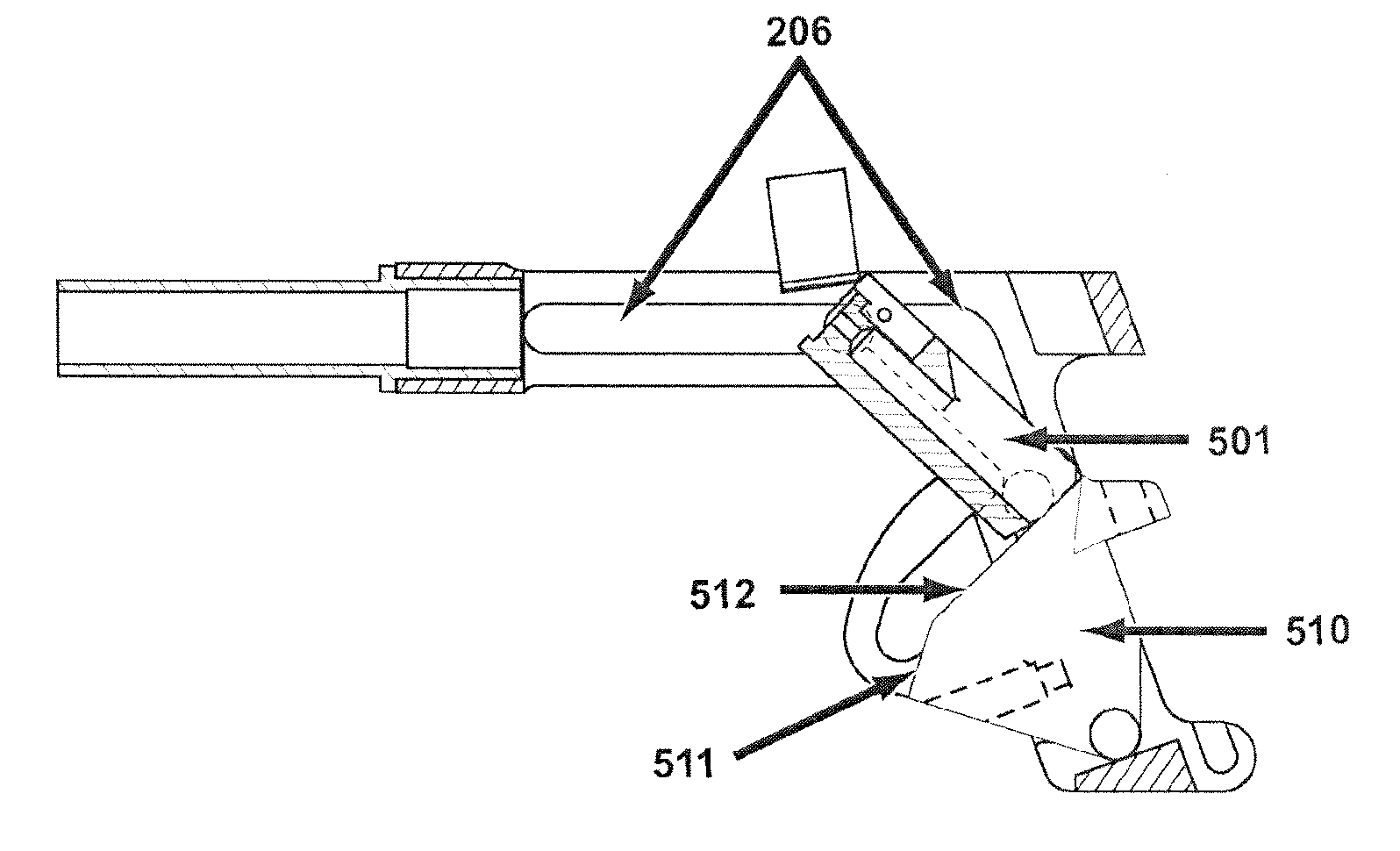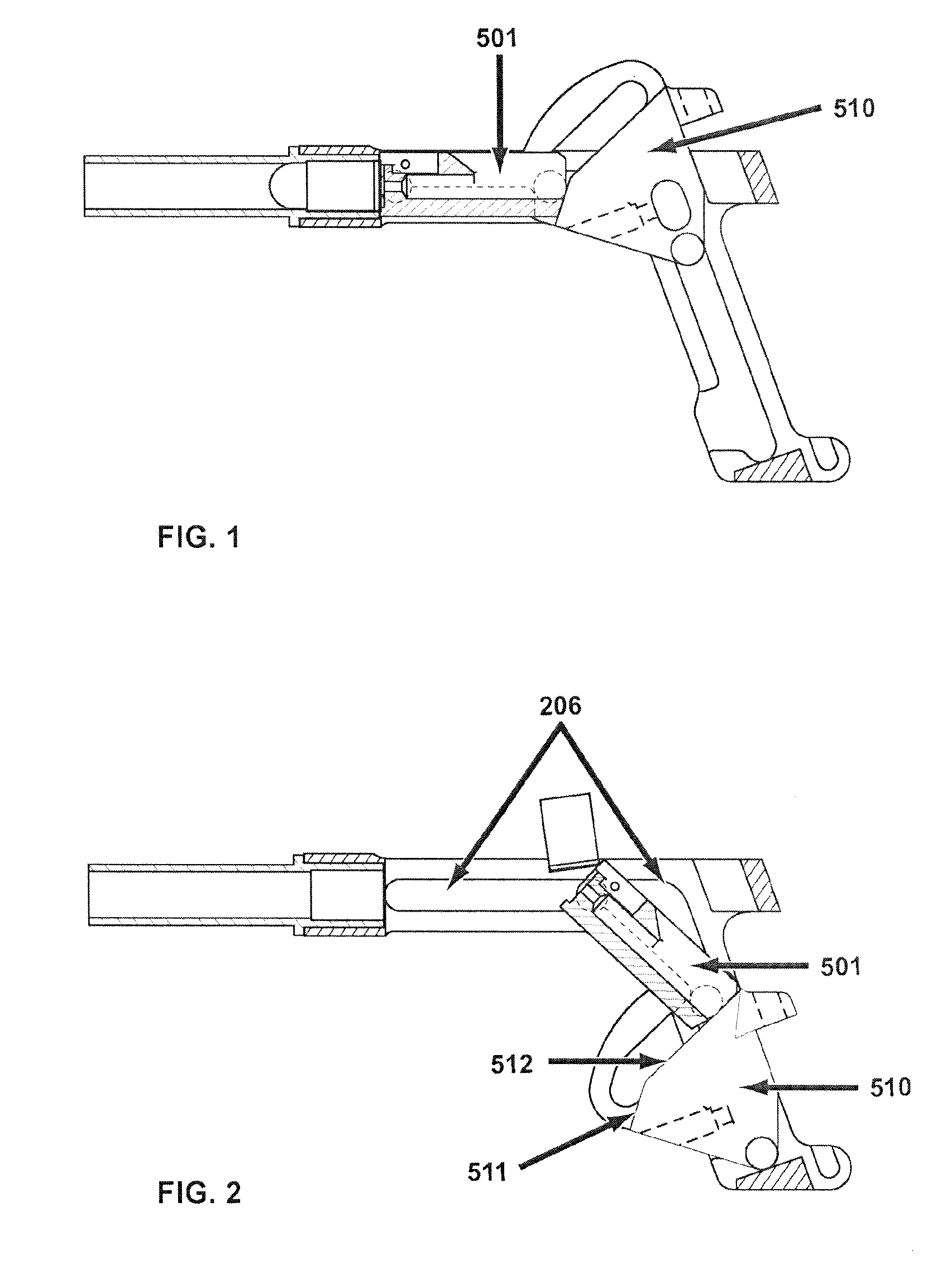Firearm with enhanced recoil and control characteristics
a control characteristic and recoil technology, applied in the direction of breech mechanism, weapon components, weapon accuracy, etc., can solve the problems of affecting accuracy and ease of use, operators were susceptible to explosive forces, and the accuracy of automatic weapons was affected, so as to reduce the vibration of the slider, reduce the vibration of the operation, and reduce the effect of vibrational movemen
- Summary
- Abstract
- Description
- Claims
- Application Information
AI Technical Summary
Benefits of technology
Problems solved by technology
Method used
Image
Examples
Embodiment Construction
[0068]Whether for handguns or rifles, in other words pistols, machine pistols, shotguns, rifles, and assault rifles, the present invention advantageously reduces the consequences of recoil and / or eliminates, for all practical purposes, a weapon's reactive jerking and permits a more compact weapon for a given caliber ammunition.
[0069]Where heavy firearms are concerned, for example machine guns and cannons, notably machine guns for land, water craft, or airborne platforms, the present invention enables a lighter frame for the weapon and a more compact and therefore more stowable or containable weapon. This allows moveable weapon systems to store more ammunition per sortie. Further, this invention enables a simplified construction for the base by diminishing the recoil tendency and dampening the stress acting upon the platform as a whole.
[0070]In one particular embodiment, the invention comprises a mobile breech made up of connected parts that comprise an inertia block and a bolt head....
PUM
 Login to View More
Login to View More Abstract
Description
Claims
Application Information
 Login to View More
Login to View More - R&D
- Intellectual Property
- Life Sciences
- Materials
- Tech Scout
- Unparalleled Data Quality
- Higher Quality Content
- 60% Fewer Hallucinations
Browse by: Latest US Patents, China's latest patents, Technical Efficacy Thesaurus, Application Domain, Technology Topic, Popular Technical Reports.
© 2025 PatSnap. All rights reserved.Legal|Privacy policy|Modern Slavery Act Transparency Statement|Sitemap|About US| Contact US: help@patsnap.com



